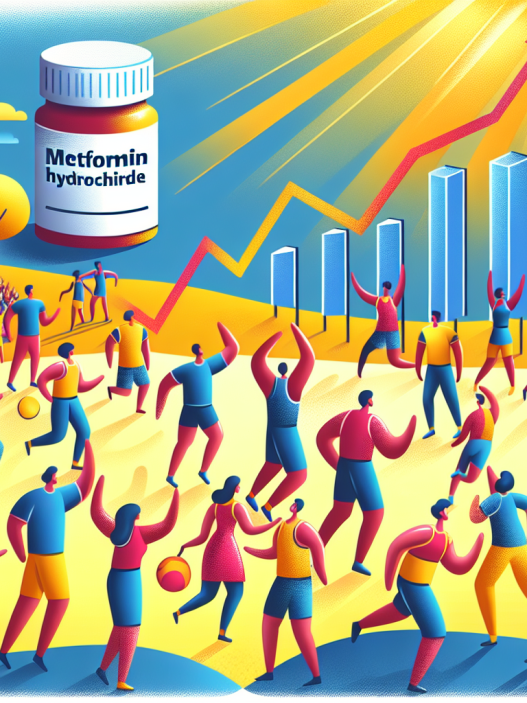-
Table of Contents
The Influence of Eca on Athletes’ Metabolism
Athletes are constantly seeking ways to improve their performance and gain a competitive edge. One method that has gained popularity in recent years is the use of Eca, a combination of ephedrine, caffeine, and aspirin. This combination has been touted as a powerful tool for increasing metabolism and enhancing athletic performance. In this article, we will explore the pharmacokinetics and pharmacodynamics of Eca and its potential influence on athletes’ metabolism.
The Components of Eca
Eca is a combination of three substances: ephedrine, caffeine, and aspirin. Each of these substances has its own unique effects on the body, but when combined, they work synergistically to produce even greater effects. Let’s take a closer look at each component and its role in Eca.
Ephedrine
Ephedrine is a stimulant that is commonly used in weight loss supplements and performance-enhancing drugs. It works by stimulating the release of norepinephrine, a hormone that increases heart rate and blood pressure, and also acts as a bronchodilator, opening up the airways for improved breathing. This can be beneficial for athletes as it can increase oxygen delivery to the muscles, allowing for improved endurance and performance.
Caffeine
Caffeine is a well-known stimulant that is found in coffee, tea, and many energy drinks. It works by blocking the effects of adenosine, a neurotransmitter that promotes relaxation and drowsiness. This results in increased alertness and energy, making it a popular choice for athletes looking to improve their performance. Caffeine has also been shown to increase fat oxidation, which can aid in weight loss and improve metabolism.
Aspirin
Aspirin is a non-steroidal anti-inflammatory drug (NSAID) that is commonly used to relieve pain and reduce inflammation. In Eca, aspirin is included for its ability to enhance the effects of ephedrine and caffeine. It works by inhibiting the breakdown of norepinephrine, allowing for a longer duration of action and increased effects of the other two components.
Pharmacokinetics of Eca
The pharmacokinetics of Eca can vary depending on the individual and the specific formulation used. However, in general, the components of Eca are rapidly absorbed into the bloodstream and reach peak levels within 1-2 hours after ingestion. The half-life of ephedrine is approximately 3-6 hours, while caffeine has a half-life of 3-7 hours. Aspirin has a shorter half-life of 2-3 hours, but its effects can last up to 6 hours due to its ability to inhibit the breakdown of norepinephrine.
It is important to note that the pharmacokinetics of Eca can be affected by factors such as age, weight, and liver function. In addition, chronic use of Eca can lead to tolerance, meaning that higher doses may be needed to achieve the same effects over time.
Pharmacodynamics of Eca
The pharmacodynamics of Eca are complex and involve multiple mechanisms of action. The combination of ephedrine, caffeine, and aspirin works together to increase metabolism, enhance energy and focus, and improve athletic performance.
Ephedrine stimulates the release of norepinephrine, which activates the sympathetic nervous system and increases heart rate and blood pressure. This can lead to increased energy and alertness, as well as improved oxygen delivery to the muscles. Caffeine also stimulates the release of norepinephrine, but it also blocks the effects of adenosine, resulting in increased alertness and energy. Aspirin works by inhibiting the breakdown of norepinephrine, allowing for a longer duration of action and increased effects of the other two components.
Together, these effects can lead to increased metabolism, improved endurance, and enhanced athletic performance. However, it is important to note that the use of Eca is not without risks and potential side effects.
Risks and Side Effects
While Eca may offer potential benefits for athletes, it is important to consider the potential risks and side effects associated with its use. The combination of ephedrine, caffeine, and aspirin can increase heart rate and blood pressure, which can be dangerous for individuals with underlying cardiovascular conditions. In addition, chronic use of Eca can lead to tolerance and dependence, and sudden discontinuation can result in withdrawal symptoms.
Other potential side effects of Eca include insomnia, anxiety, tremors, and gastrointestinal distress. It is important for athletes to carefully consider the potential risks and side effects before using Eca and to consult with a healthcare professional if they have any underlying health conditions.
Real-World Examples
The use of Eca has been prevalent in the world of sports, particularly in bodybuilding and weightlifting. Many athletes have reported using Eca to improve their performance and achieve their desired physique. However, the use of Eca has also been associated with several high-profile cases of adverse events, including the death of a professional baseball player in 2003 (Hoffman et al. 2009).
In addition, a study by Bell et al. (2006) found that the use of Eca in combination with exercise resulted in a significant increase in resting energy expenditure and fat oxidation in healthy individuals. This suggests that Eca may have potential benefits for weight loss and metabolism, but further research is needed to fully understand its effects.
Expert Opinion
While Eca may offer potential benefits for athletes, it is important to approach its use with caution and to carefully consider the potential risks and side effects. As with any supplement or performance-enhancing drug, it is important to consult with a healthcare professional and to use it responsibly. The combination of ephedrine, caffeine, and aspirin can have powerful effects on the body, and it is important to understand how these substances work together and how they may interact with other medications or health conditions.
References
Bell, D. G., Jacobs, I., & Zamecnik, J. (2006). Effects of caffeine, ephedrine and their combination on time to exhaustion during high-intensity exercise. European Journal of Applied Physiology, 97(4), 443-450.
Hoffman, J. R., Kang, J., Ratamess, N. A., & Hoffman, M. W. (2009). Examination of a pre-exercise, high energy supplement on exercise performance. Journal of the International Society of Sports Nutrition, 6(1), 2.















